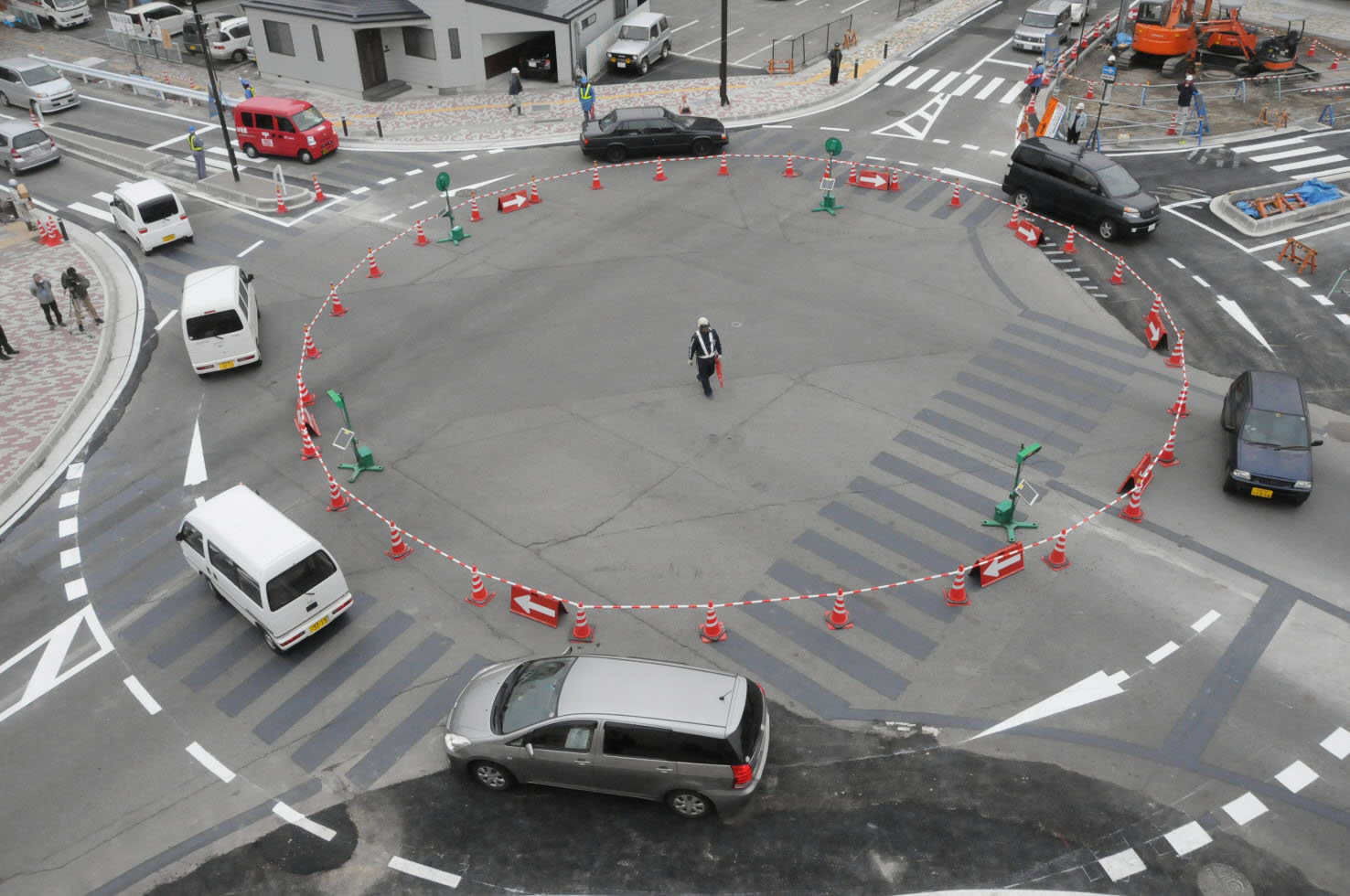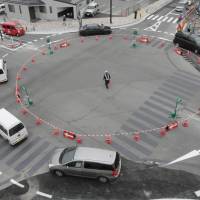In what is being touted as a local first, a new roundabout is in operation in the Towa district of Iida, Nagano Prefecture, in a bid to ease congestion and eliminate the need for traffic lights.
The Towa roundabout, which went into operation Tuesday, connects five thoroughfares and, because vehicles in Japan travel on the left side, traffic flows clockwise through the circle.
Like in other countries, vehicles in the roundabout have right of way and those seeking to enter must yield. Thus in the case of the Towa roundabout, they must yield to vehicles approaching from the right.
The roundabout concept is catching on here because traffic flow can be ensured without the need for lights, which can occasional stop functioning, such as in the event of a disaster.
The city of Iida has been engaged in street improvement work 2009.
Initial plans to make the roundabout were rejected because there was insufficient data on their safety, so the city was inclined to construct a standard intersection instead.
With the help of the International Association of Traffic and Safety Sciences based in Tokyo, a pilot experiment was conducted at another roundabout in Iida's Azuma district in 2010.
Officials were able to obtain specific data on the roundabout's safety, including that vehicles in the circle maintained a 20-25 kph speed limit.
The rolling blackouts that affected several cities in the early days of the Fukushima atomic plant crisis that started in March 2011 caused some traffic lights to stop functioning, resulting in massive traffic jams. Rolling blackouts have also remained a possibility in various parts of the nation due to the effective shutdown of most of Japan's reactors due to the crisis.
That situation highlighted the effectiveness of roundabouts during an emergency and so the city decided to construct more of them to expedite traffic flow.
Work is under way to place median strips at the exit/entry points of the circle.
City officials Tuesday turned off the traffic lights and then opened the roundabout for public use.
Construction will continue on the roundabout's center island, and this is slated to be completed by next month.
"Not only are roundabouts unaffected by blackouts, but they also help reduce emissions of carbon dioxide since vehicles do not have to stop and wait for traffic lights to change," said Mitsuo Makino, the mayor of Iida.
According to Hideki Nakamura, a professor of transportation engineering at Nagoya University, roundabouts that do not depend on traffic signals will have an increasingly important role to play in a country where earthquakes can cause considerable damage, given their ability to continue operating even in a blackout.
They are considered to be very safe because the reduced speed of vehicles lessens the risk of accidents and collisions, as happen often at intersections, sometimes resulting in death. While roundabouts may not work well in large cities, Nakamura believes intersections should be turned into roundabouts if their average traffic flow is around 15,000 cars a day.
The first roundabout was built in England and they have gradually gained popularity in many Western countries. Unlike rotaries, which give priority to entering traffic, vehicles already in roundabouts have right of way.
Cars can enter rotaries without reducing their speed, but on a roundabout, all vehicles have to stop before entering them, so the speed at which they enter the circle is reduced. This makes it safer and thus helps prevent serious accidents.
The Ministry of Land, Infrastructure, Transport and Tourism has reported that there are very few roundabouts in operation in Japan.
This section, appearing Saturdays, features topics and issues from the Chubu region covered by the Chunichi Shimbun. The original article was published Feb. 3.




